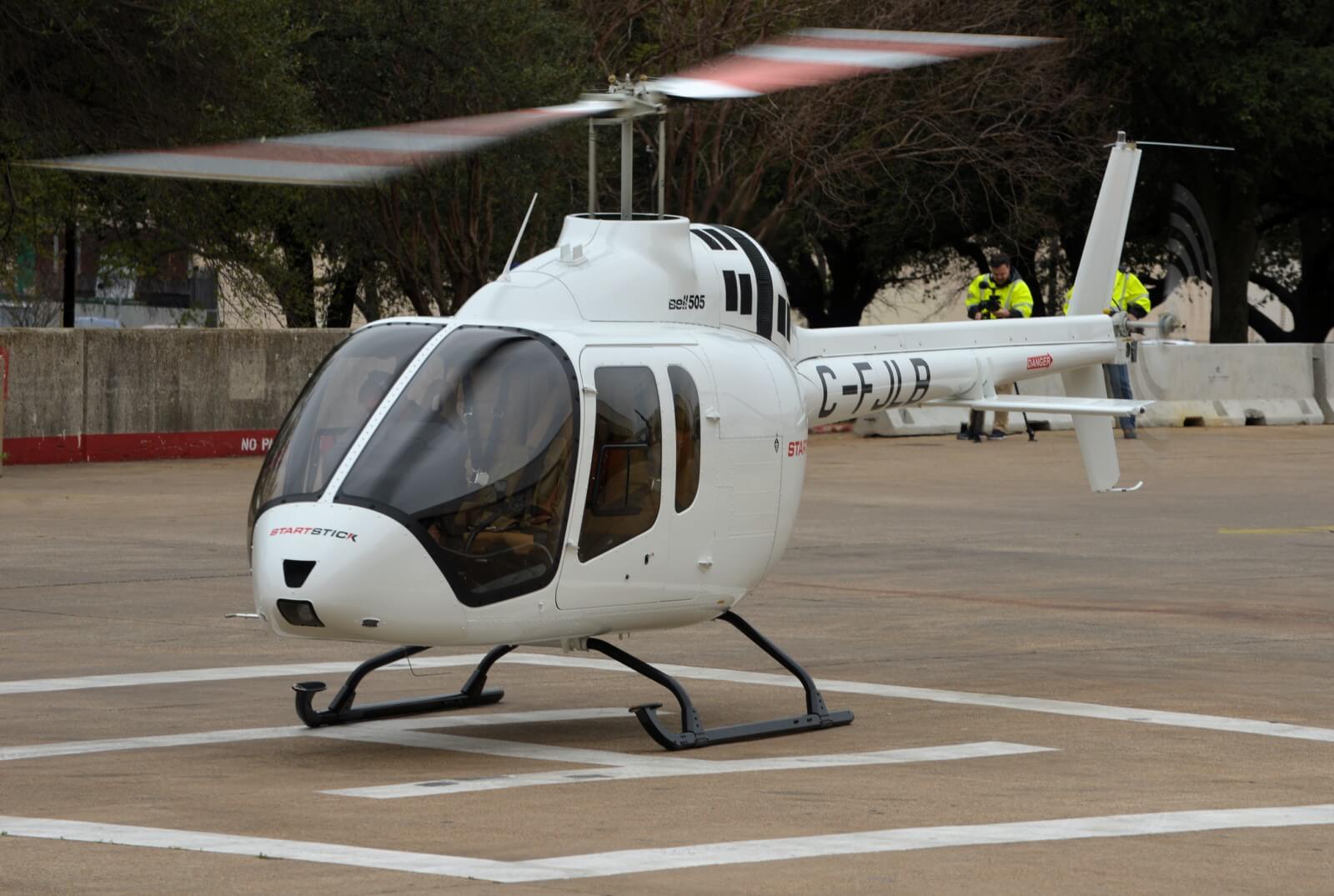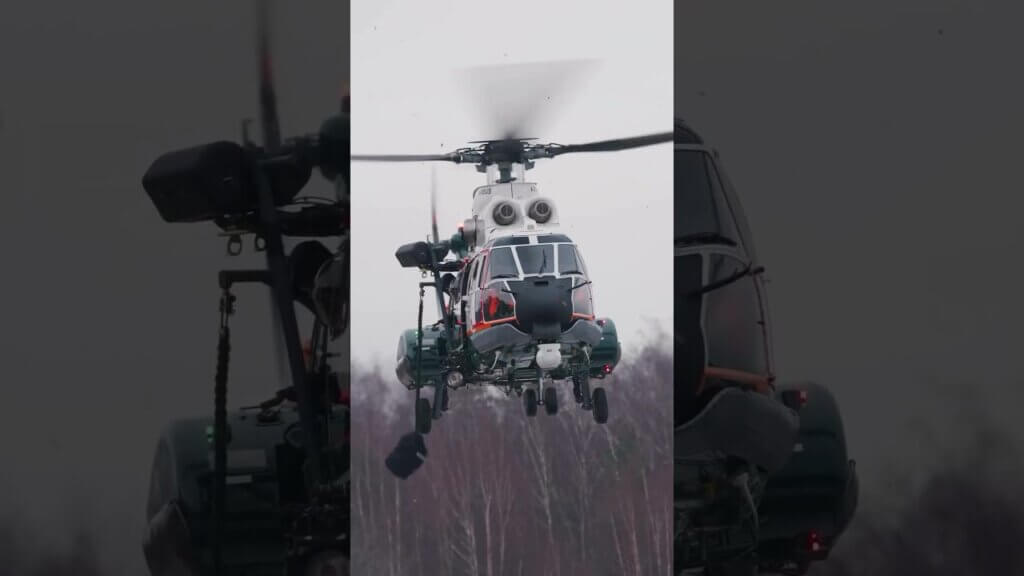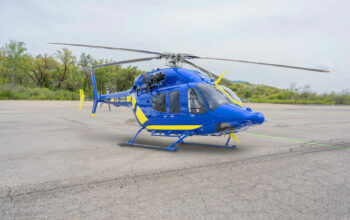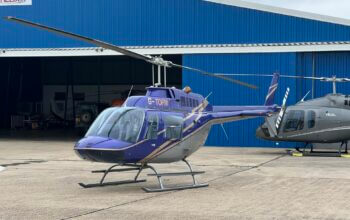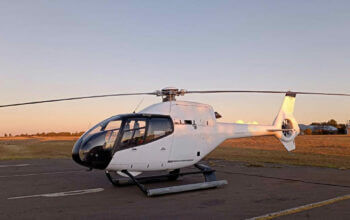For the second consecutive year, Honeywell has downgraded its five-year forecast of global helicopter deliveries by approximately 400 units in the face of slow economic growth and economic and political uncertainty.

In its latest “Turbine-Powered Civil Helicopter Purchase Outlook,” released Monday during HAI Heli-Expo 2017 in Dallas, Texas, Honeywell predicts that 3,900 to 4,400 civilian-use helicopters will be delivered from 2017 to 2021.
That’s a reduction of 400 aircraft compared to last year’s forecast, which predicted 4,300 to 4,800 civil helicopter deliveries between 2016 and 2020. And it’s about 850 fewer aircraft than Honeywell’s 2015 forecast of 4,750 to 5,250 deliveries between 2015 and 2019.
According to Honeywell director of market analysis Charles Park, the decline in expected new helicopter purchases is global. Compared to the previous year’s expectations, “each region in the world actually showed a decline, so it wasn’t concentrated in one place versus others,” he said.
On a positive note, the declines were relatively small in North America and Europe, where purchase plans only dropped by around two and three percent, respectively. Because North America and Europe account for “very, very substantial shares of the fleet,” Park said, “the fact that they didn’t go down much helps buffer the impact to some extent.”
Honeywell’s forecast is based on its annual survey of 1,000 helicopter operators, plus a separate analysis of large fleet or “mega” operators. According to Park, slow global economic growth and volatility in oil and gas markets contributed to the cautious attitudes that survey respondents expressed this year.
“Commodity price declines that we saw beginning in 2014, or late 2013, clearly put a damper on buying aircraft for oil-and-gas support,” he said. He added, however, that many of the respondents in this year’s survey — who were queried beginning in November 2016 — likely also had the U.S. presidential election front of mind.
“I would say it’s more than economics,” Park ventured, suggesting that the helicopter market, like the stock market, abhors uncertainty.
“What we’re seeing, I think, is maybe a little bit of uncertainty in the respondents,” he continued. “The more uncertainty there is about how things may progress in terms of ease of doing business, tax policies, trade policies… that can tend to stall the new purchase decision as people sort of sit on the fence, wait and see, and evaluate conditions.”
Setbacks associated with specific platforms — such as last year’s grounding of the Airbus Helicopters H225, and the fatal crash of a Bell 525 Relentless prototype during flight testing in July — may have also contributed to the decline in the market outlook.
“In general, if a program is launched and publicized, we pick up demand for it in our responses,” Park said. “In the case where we see a delay, or an incident in flight test, or some kind of technical problem that has been publicized, you can actually watch the interest levels drop off until that situation is recovered.”
By the same token, Honeywell is able to track growing interest in helicopter programs that are progressing well — such as the Bell 505 Jet Ranger X, Bell Helicopter’s new short light single, which achieved initial type certification by Transport Canada in late December 2016.
“In the case of the 505, it looks like it’s going to be a pretty successful program,” Park noted.
Interest in light single-engine helicopters such as the Bell 505 is particularly strong in North America, where more than 75 percent of planned purchases in this year’s survey were identified as light singles. Globally, the category accounted for just under half of planned new purchases.
By sector, Park said, interest in emergency medical services (EMS) aircraft was strong in Europe, but declined in the U.S. — possibly due to uncertainty about the future trajectory of the U.S. healthcare system. According to Park, EMS demand in other parts of the world, notably Latin America, remains fairly low.
Meanwhile, planned purchases of general utility aircraft increased, and interest in law enforcement helicopters was also up. With respect to the latter, Park observed, “That could be consistent with the expectation for greater law enforcement and border security, not just in the United States, but in other areas as well.”
Despite the cautious outlook for new helicopter purchases, Honeywell found that helicopter fleet utilization generally increased over the past 12 months compared to the previous year. In 2017, Honeywell predicts that usage rates will improve significantly in North America and Latin America, but at a reduced rate in Europe.
“There is a little more optimism about the future in the U.S. operator base in terms of economic growth and business growth over the next couple of years,” Park said.





